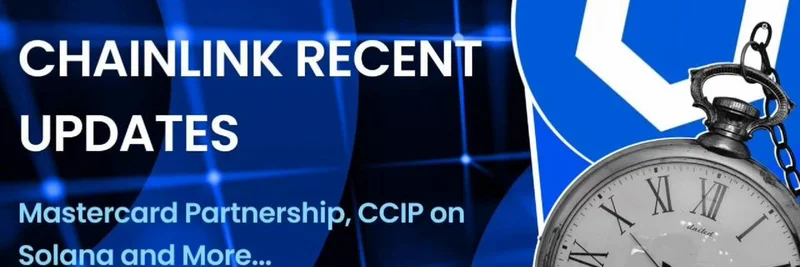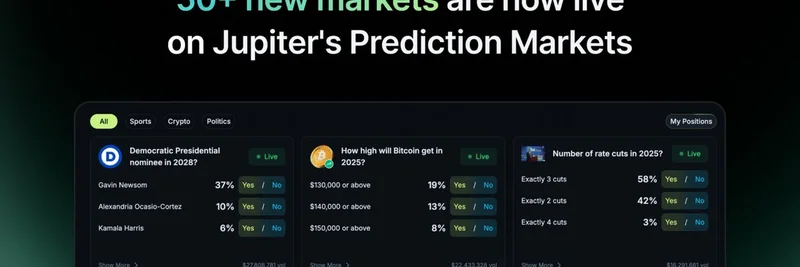Chainlink, a leading blockchain oracle network, has been making waves in the crypto space with its recent updates and partnerships. In 2025, Chainlink's innovations are reshaping the landscape of decentralized finance (DeFi), central bank digital currencies (CBDCs), and institutional finance. Let's dive into the key developments that are driving the rise of $LINK.
Solana Joins the Chainlink CCIP Universe
One of the most significant breakthroughs is the integration of Solana into Chainlink's Cross-Chain Interoperability Protocol (CCIP). With the rollout of CCIP v1.6 on Solana's mainnet, developers can now connect Solana to major blockchains like Ethereum, Arbitrum, and Base. This enhancement facilitates smoother cross-chain communication and token transfers, benefiting projects such as Maple Finance and Shiba Inu.
The CCIP on Solana is already live, supercharging the growth of Solana DeFi by unlocking access to over $18B+ of assets. Tools like Interport and OpenOcean are streamlining liquidity across these chains, removing major friction points for developers and users alike. This move positions Chainlink as a core infrastructure provider, powering everything from DeFi to CBDCs and institutional finance.
Mastercard Collaboration for On-Chain Crypto Purchases
Chainlink's partnership with Mastercard is another game-changer. The collaboration aims to simplify on-chain crypto purchases using traditional debit and credit cards, backed by ZeroHash and Swapper Finance. This setup integrates Mastercard's global network into Web3 infrastructure, enabling seamless fiat-to-crypto movements.
The partnership leverages Chainlink's standard for data and interoperability, ensuring secure and reliable transactions. This development is a significant step towards bridging traditional finance and the crypto economy, making it easier for billions of people to participate using the cards in their wallets.
J.P. Morgan's First Public On-Chain DPP Settlement
Chainlink played a crucial role in a landmark cross-chain delivery versus payment (DVP) settlement between J.P. Morgan's Kinexys and Ondo Finance. This involved real tokenized US Treasuries moving across two blockchains, marking J.P. Morgan's first public on-chain DPP settlement. Chainlink's CCIP stitched it all together, turning blockchain from theory into practice for institutional finance.
This milestone demonstrates the potential of blockchain technology in transforming global capital markets, with Chainlink at the forefront of enabling secure and compliant transactions across multiple blockchains.
Regulatory Compliance with ACE
On the regulatory front, Chainlink introduced the Automated Compliance Engine (ACE), a framework built to integrate compliance directly into smart contracts. ACE supports identity checks, enforcement rules, and real-time monitoring, based on the Chainlink runtime environment. This development is seen as the final building block needed to bring serious institutional capital into the crypto space.
Hedera's Adoption of CCIP
Hedera's adoption of Chainlink's CCIP is another big step forward. Now live on mainnet, Hedera's integration enables interaction with over 46 blockchains. Developers can send assets, messages, and smart contract calls across all chains without creating new bridges, ensuring that token-managed assets remain secure.
Rewarding Participation with the Chainlink Rewards Program
Chainlink is also rethinking how it rewards participation. The Chainlink Rewards program targets meaningful contributors, such as those staking $LINK or joining build initiatives. The first rollout, SeasonGenesis, launched with Space & Time, offering SXT tokens to eligible participants. This approach incentivizes sustained engagement and avoids the pitfalls of blanket airdrops.
Proof of Reserve System Gains Traction
Chainlink's proof of reserve system is gaining real traction, with Coinbase now using it to verify the 1-to-1 backing of CB-BTC, their wrapped Bitcoin token. Chainlink's decentralized oracles deliver real-time reserve data, offering transparency that's hard to match with traditional audits. This system is fast becoming an industry standard, enhancing trust in the crypto ecosystem.
Project Acacia: A Glimpse into Hybrid Finance
In Australia, Chainlink is playing a key role in Project Acacia, a pilot with Westpac, Imperium Markets, and the Reserve Bank of Australia. The project links tokenized assets to the country's domestic payment system, enabling real-time DVP settlement without traditional delays or errors. This initiative provides a glimpse into what hybrid finance could look like, combining blockchain speed with regulated reliability.
Conclusion
Chainlink's recent updates and partnerships are enabling cross-chain functionality, ensuring regulatory compliance, powering institutional adoption, and securing massive amounts of value across DeFi. With each integration, Chainlink becomes more essential to the entire crypto ecosystem. The rise of $LINK is a testament to the platform's impact and its role in shaping the future of finance.
For more insights into the latest blockchain technologies and meme tokens, visit Meme Insider.




